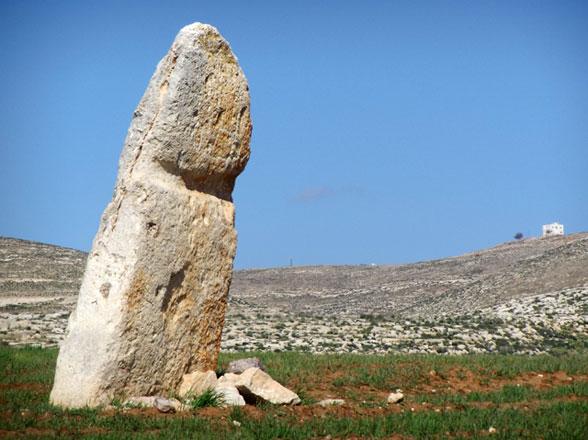Initiative seeks to revive glory of Jordan’s dolmens

The Jordan Times
AMMAN — Having survived thousands of years to tell stories about the Kingdom’s early societies, Jordan’s Late Bronze Age dolmens (upright stone structures) have now fallen into a state of neglect, according to the founder of initiative to protect these ancient structures.
The dolmens, which date back to 5,000 years, are among the oldest communal constructions in Jordan, situated in 13 different locations across the Kingdom, said Abdulraheem Arjan, photographer and founder of the Dolmens Protection Initiative.
Each dolmen is comprised of a large capstone that rests on at least two upright stones, forming a “tremendous monument that illustrates the development of early communal life”, the photographer told The Jordan Times on Tuesday.
Arjan, who is also an archaeological researcher, noted that in 2011 when he first started the initiative, only a handful of people were interested in exposing “the true identity of one of Jordan’s historical sites”.
For this reason, he said, he worked to incorporate the dolmens into the national and international tourism map, in addition to familiarising the public and citizens with the historical significance of the dolmens through media, social media platforms and field visits.
The dolmens are located in the Murayghat area and in Damia, Faihaa, Sukhnah, Birayn, Jordan Street and Deir Alla, Arjan said.
“The Kingdom’s dolmens carry an endless list of myths and theories”, he said. Some of these legends claim that they were the houses of goblins and ogres. According to other beliefs, the dolmens were used as signs on trade routes.
It is more likely, he said, that the above-ground chambers were used as burial sites for the elite.
“On the capstones there are many holes, all of which refer to galaxies, the position of the stars and planets, creating some sort of star maps that correspond to various astrological points,” Arjan said.
The arresting stone structures located on the rocky hills of Murayghat area, some five kilometres from Madaba, “would be a great starting point for marketing the dolmens due to its proximity to the area’s tourist destinations”, he said.
Efforts must be exerted to develop the surrounding area to facilitate tourism and bring in visitors, he added.
While the UK’s Stonehenge is one of the most recognisable prehistoric dolmens in the world and has featured in many TV shows, documentaries and lectures and South Korea has launched stamps featuring the images of its dolmens, the future of Jordan’s dolmens “remains shadowy”, Arjan said.
“History lives through public awareness, and the protection of the national heritage is not only the responsibility of the country, but of all Jordanians.”
Latest News
 Safadi, Iranian counterpart discuss war on Gaza, regional escalation
Safadi, Iranian counterpart discuss war on Gaza, regional escalation US vetoes Security Council resolution on full Palestinian UN membership
US vetoes Security Council resolution on full Palestinian UN membership King, Bahrain monarch stress need to maintain Arab coordination
King, Bahrain monarch stress need to maintain Arab coordination Security Council to vote Thursday on Palestinian state UN membership
Security Council to vote Thursday on Palestinian state UN membership Dubai reels from floods chaos after record rains
Dubai reels from floods chaos after record rains
Most Read Articles
- Jordan urges UN to recognise Palestine as state
- Senate president, British ambassador discuss strategic partnership, regional stability
- JAF carries out seven more airdrops of aid into Gaza
- Temperatures to near 40 degree mark next week in Jordan
- Safadi, Iranian counterpart discuss war on Gaza, regional escalation
- UN chief warns Mideast on brink of ‘full-scale regional conflict’
- US vetoes Security Council resolution on full Palestinian UN membership
- Google fires 28 employees for protesting $1.2 billion cloud deal with “Israeli” army
- Biden urges Congress to pass 'pivotal' Ukraine, Israel war aid
- Israeli Occupation strike inside Iran responds to Tehran's provocation, reports say